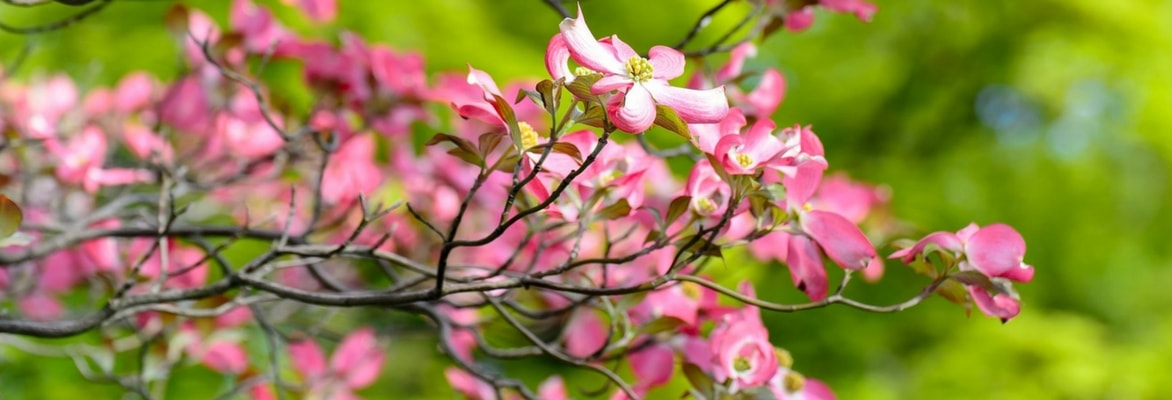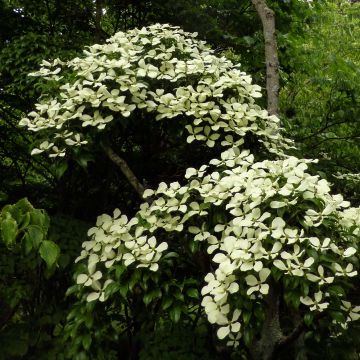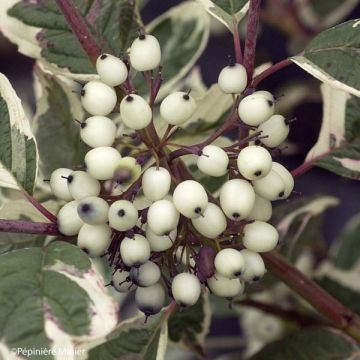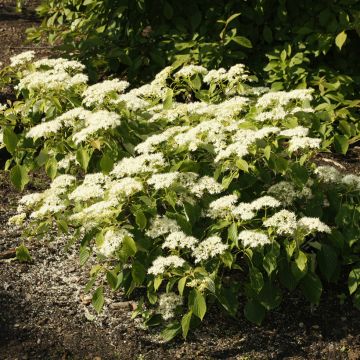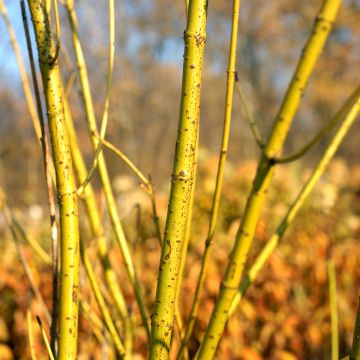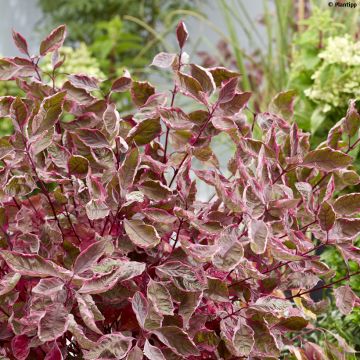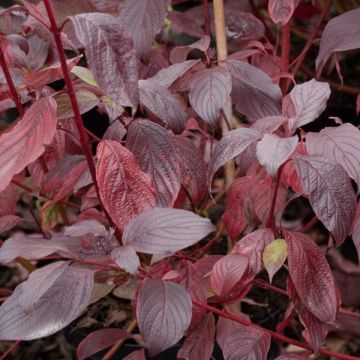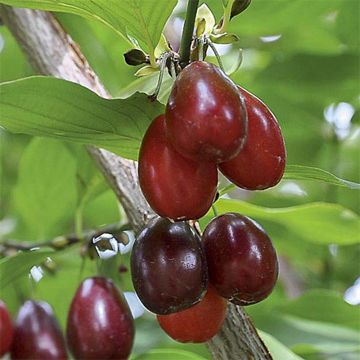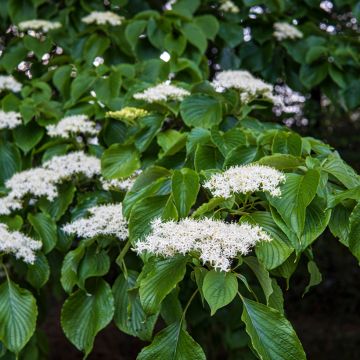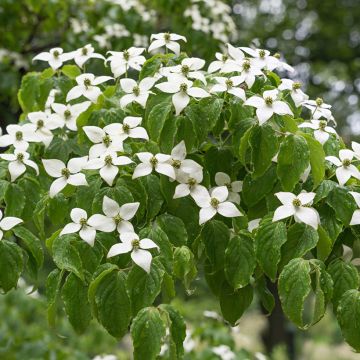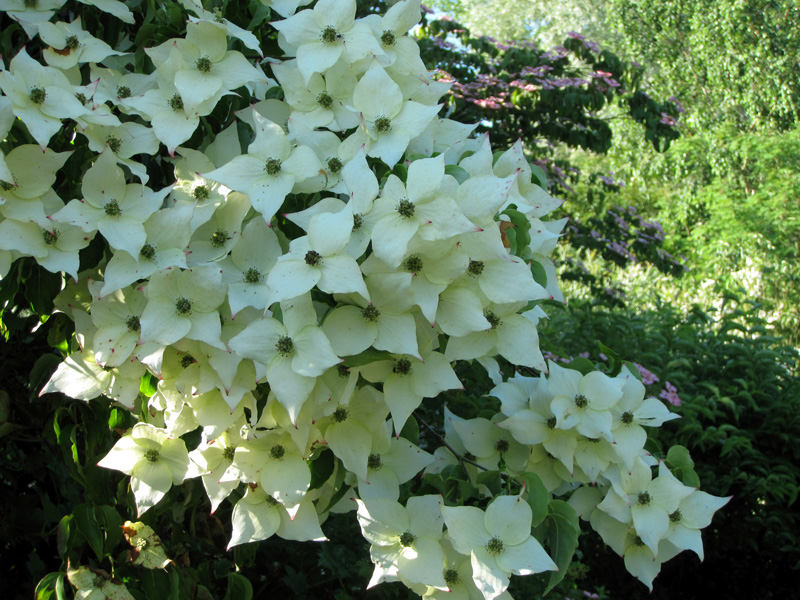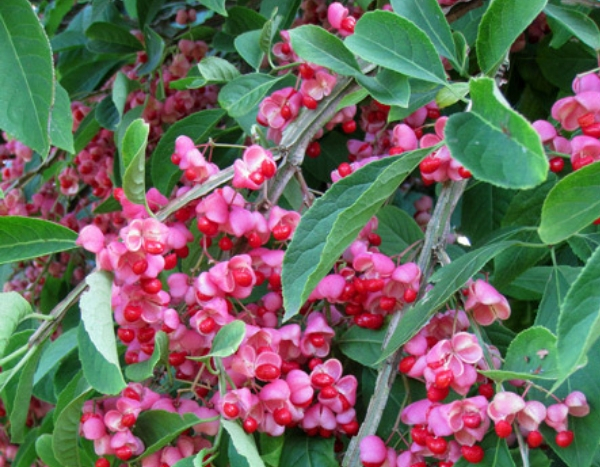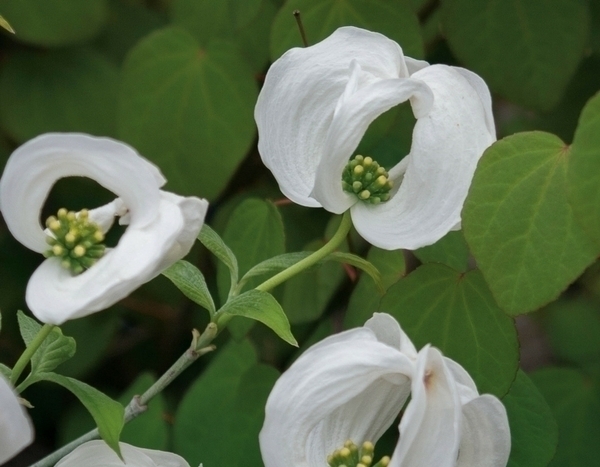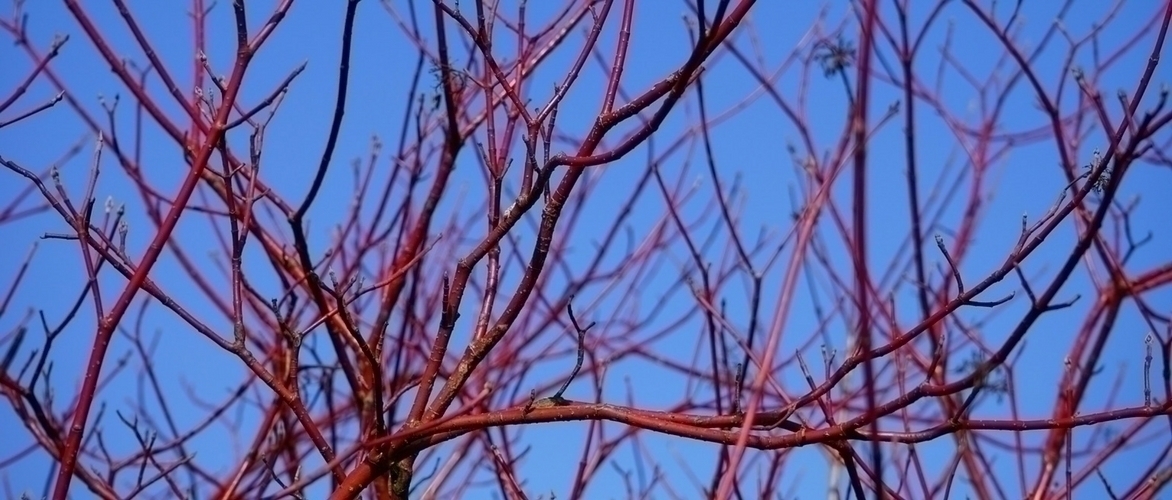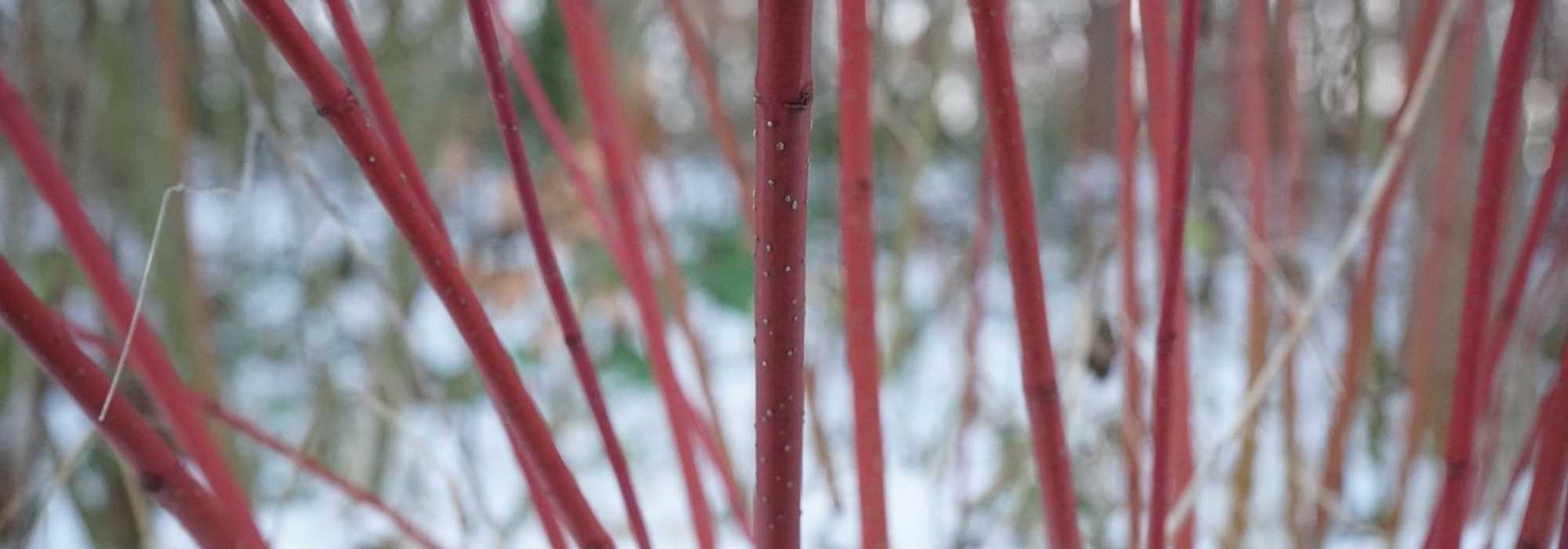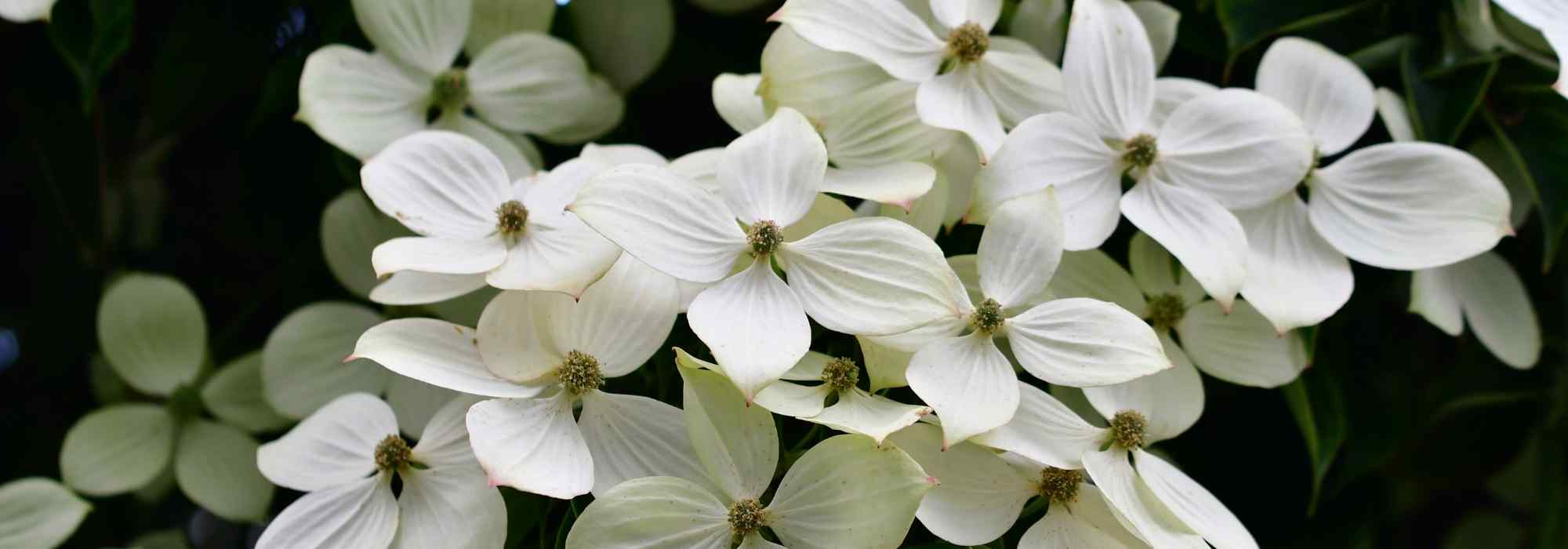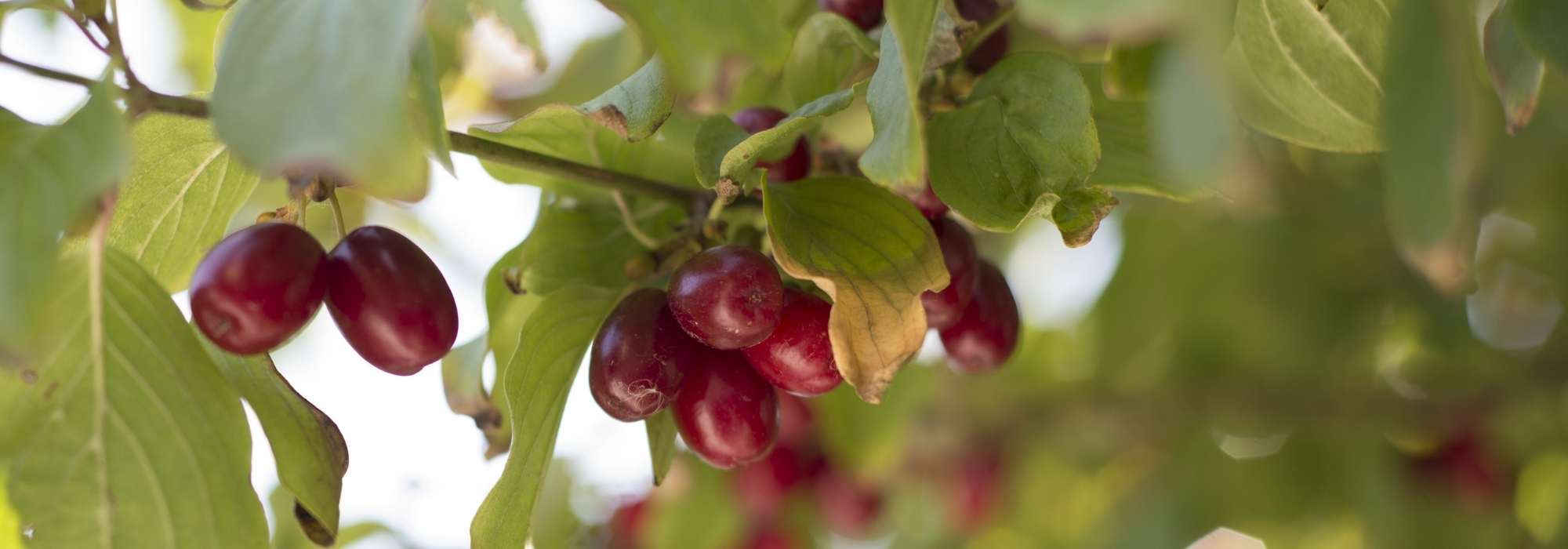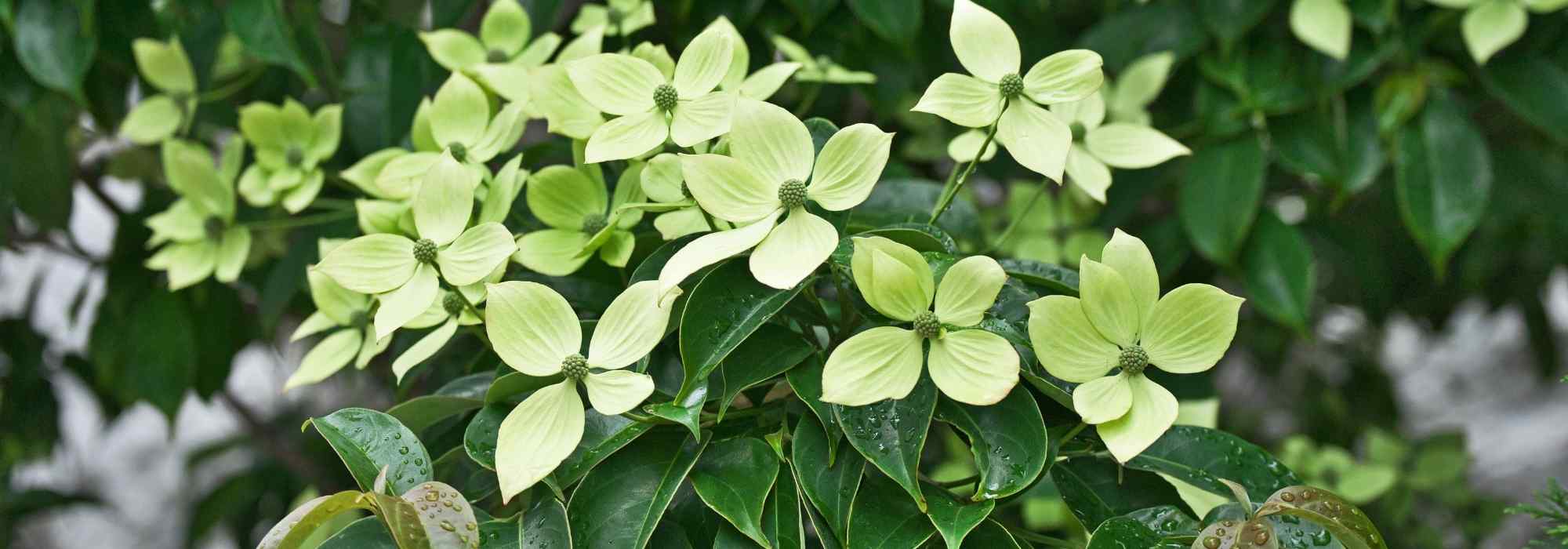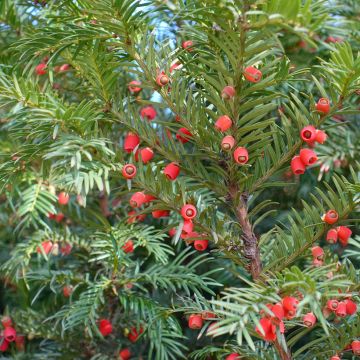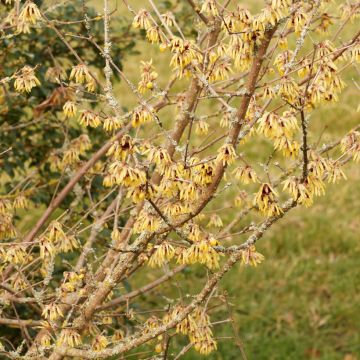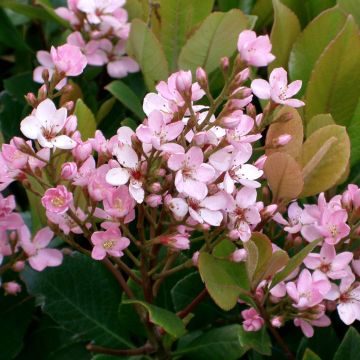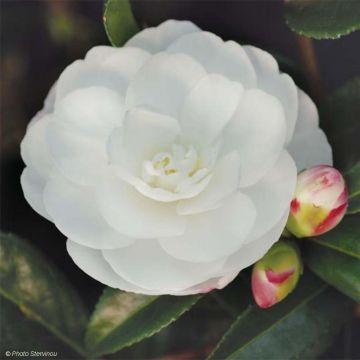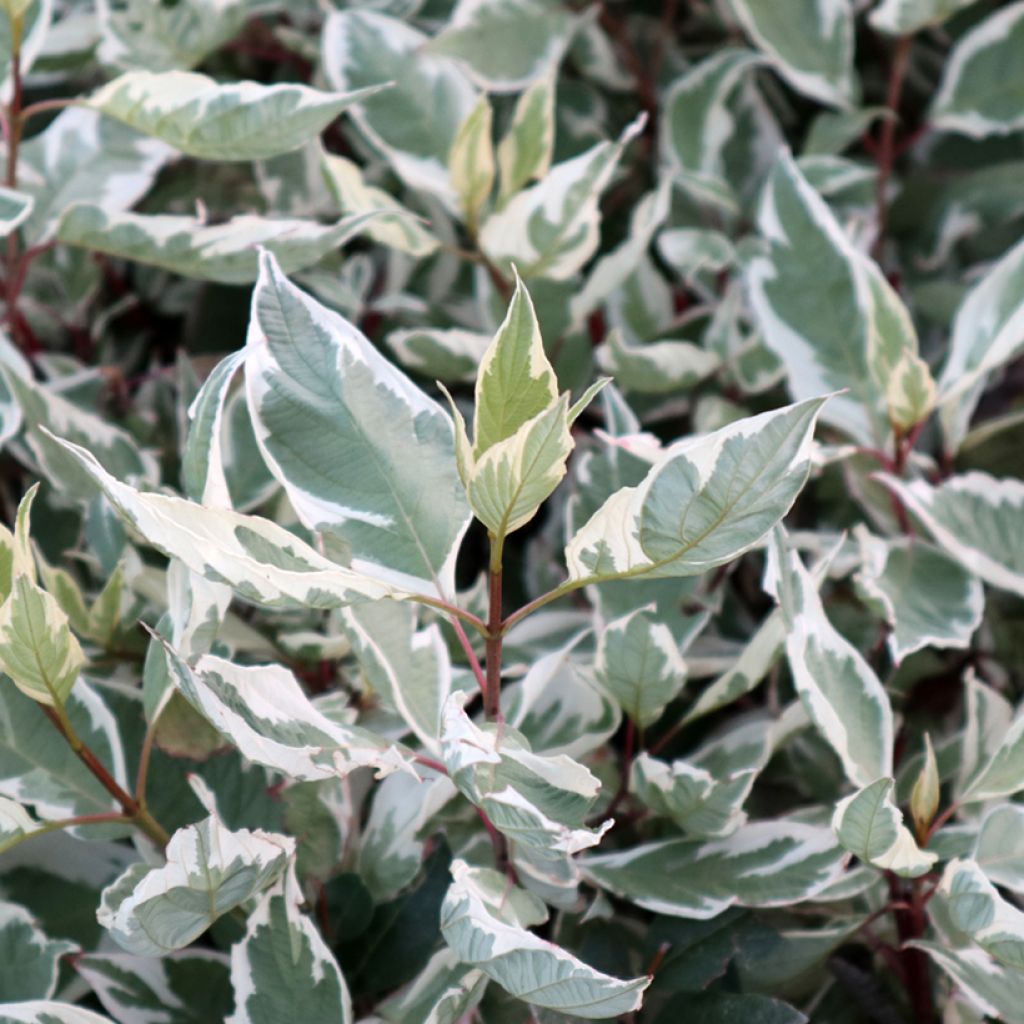

Cornus alba Ivory Halo - White Dogwood
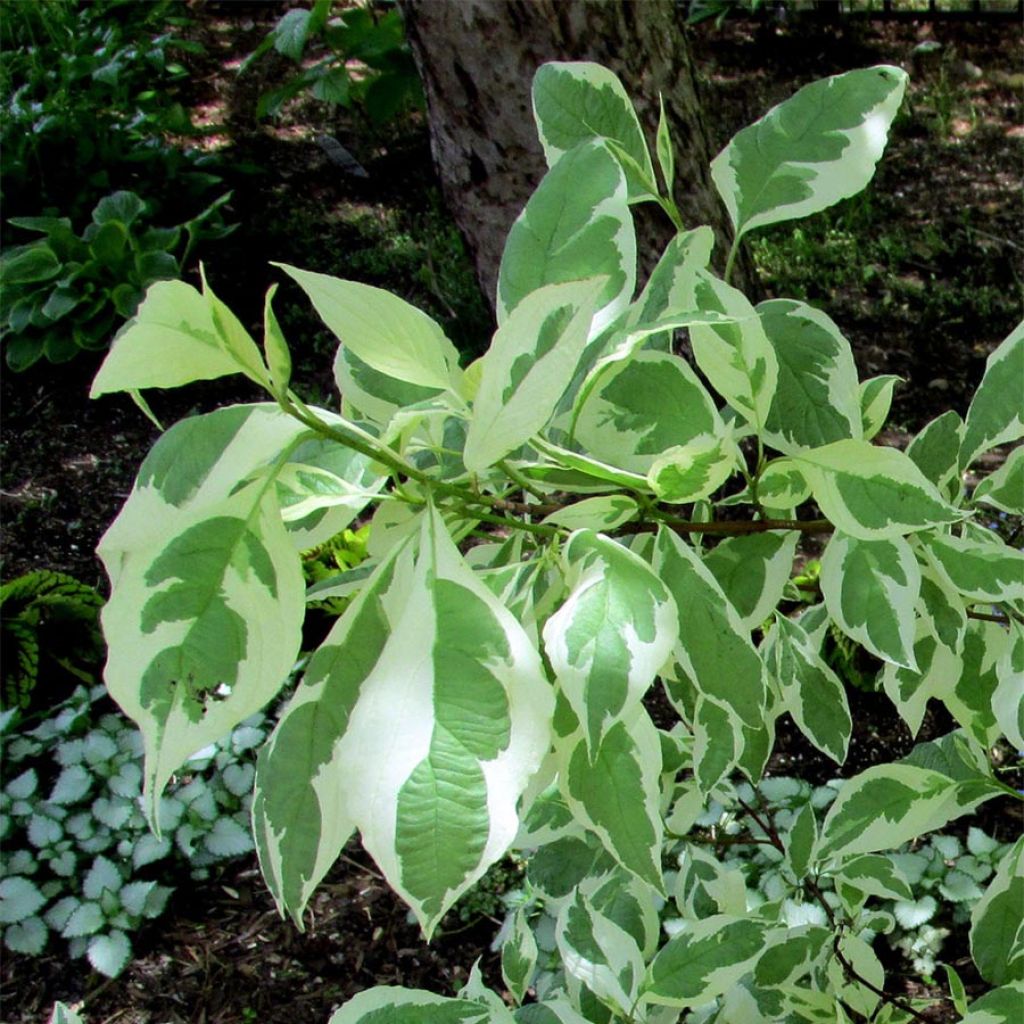

Cornus alba Ivory Halo - White Dogwood
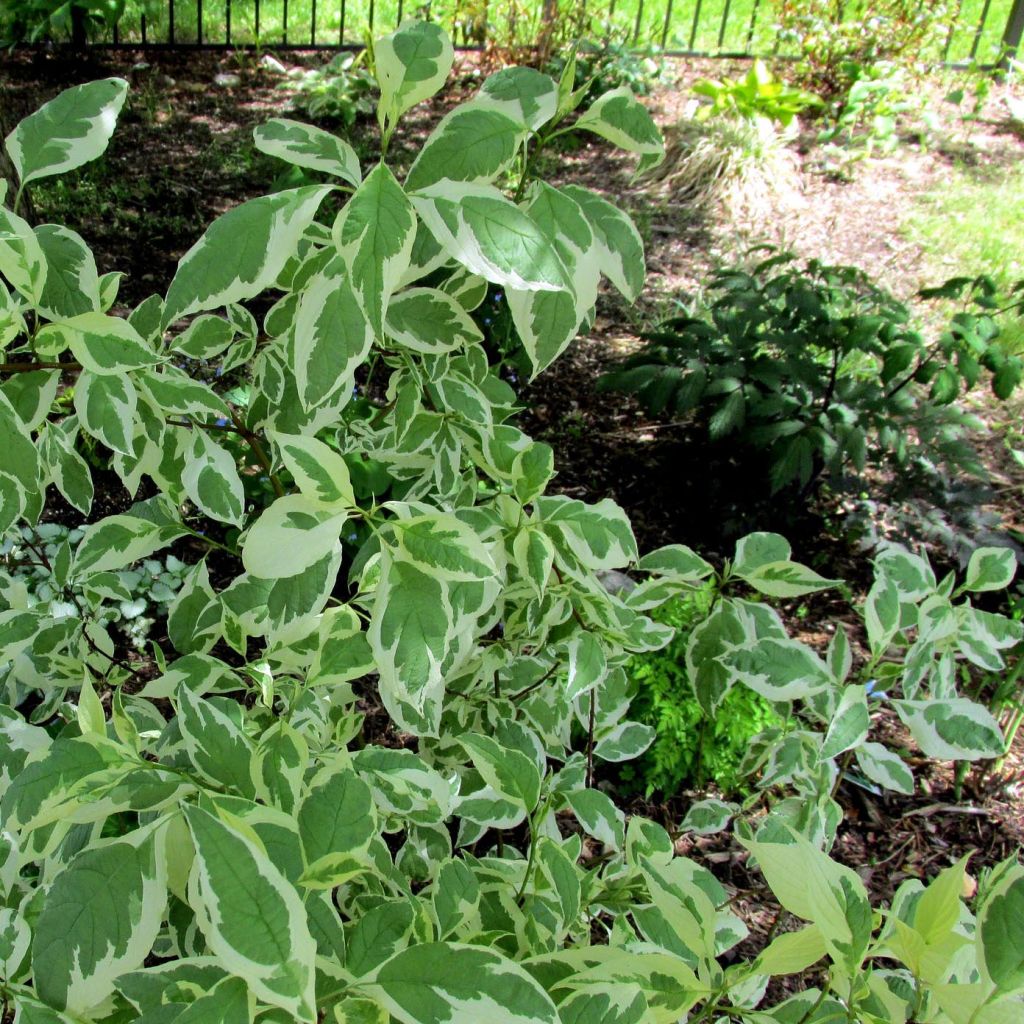

Cornus alba Ivory Halo - White Dogwood
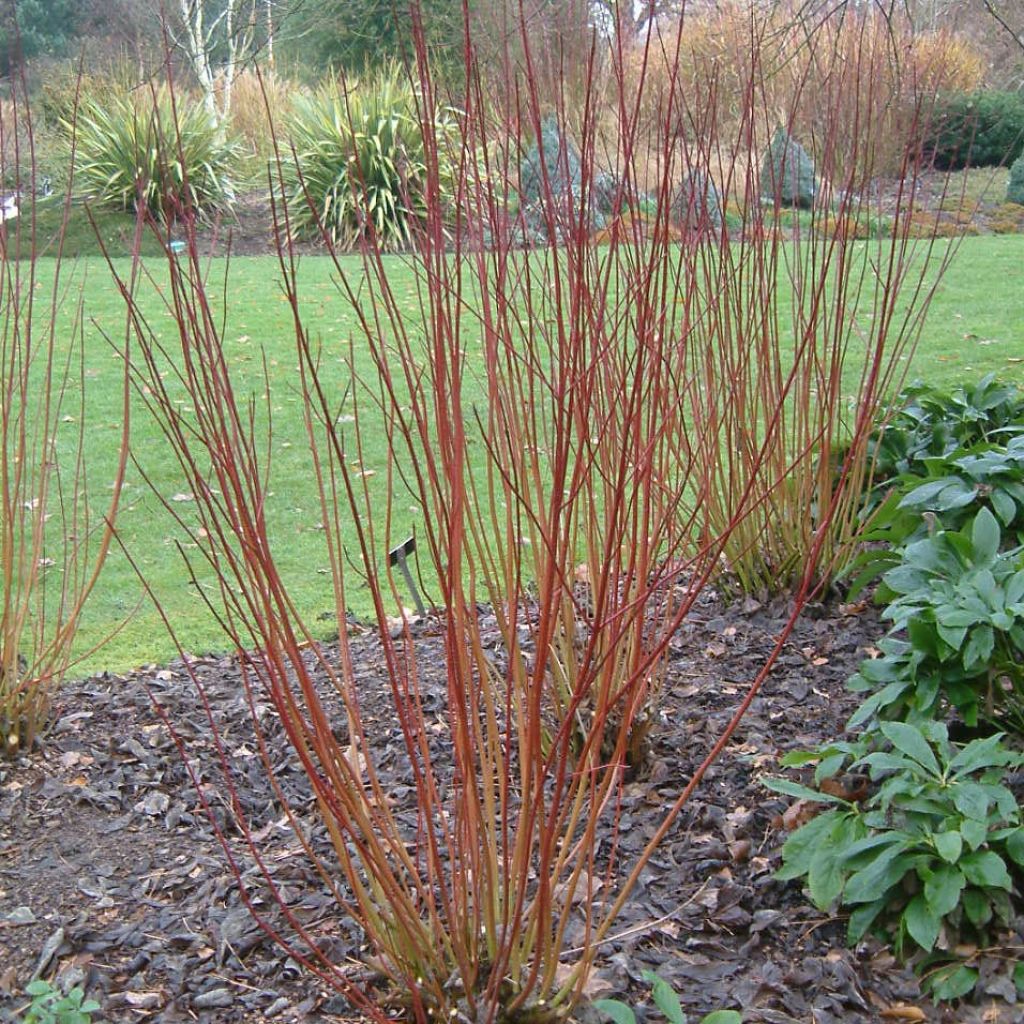

Cornus alba Ivory Halo - White Dogwood


Cornus alba Ivory Halo - White Dogwood
Cornus alba Ivory Halo - White Dogwood
Cornus alba Ivory Halo® 'Bailhalo'
White Dogwood, Siberian Dogwood
Received in perfect condition and in full health, this bush has many shoots of around 50 cm (20in). It arrived during the hot early summer, so it needed to be watered abundantly until the end of the heatwaves, but it continued to extend its shoots until September. Magnificent!
Bob, 21/11/2023
Special offer!
Receive a €20 voucher for any order over €90 (excluding delivery costs, credit notes, and plastic-free options)!
1- Add your favorite plants to your cart.
2- Once you have reached €90, confirm your order (you can even choose the delivery date!).
3- As soon as your order is shipped, you will receive an email containing your voucher code, valid for 3 months (90 days).
Your voucher is unique and can only be used once, for any order with a minimum value of €20, excluding delivery costs.
Can be combined with other current offers, non-divisible and non-refundable.
Home or relay delivery (depending on size and destination)
Schedule delivery date,
and select date in basket
This plant carries a 24 months recovery warranty
More information
We guarantee the quality of our plants for a full growing cycle, and will replace at our expense any plant that fails to recover under normal climatic and planting conditions.

Would this plant suit my garden?
Set up your Plantfit profile →
Description
The Cornus alba Ivory Halo® is a new variety of white dogwood. It has variegated foliage and is well-suited for small gardens due to its compact and bushy nature. The shrub forms a dense dome and looks elegant with its green leaves outlined with cream-coloured edges. In autumn, it features orange stems that make it stand out, and in winter, it looks stunning with its red and shiny branches. As it ages, this shrub remains strong and resilient with a well-branched base. It can add a touch of brightness to any slightly dark corner of a small garden in both urban and rural areas.
The Cornus alba Ivory Halo is a member of the dogwood family, originally from Siberia, on the banks of the Amur River, and Russia and Manchuria's moist deciduous and coniferous forests. It is a hardy shrub that thrives in harsh and extreme weather conditions near water. The 'Ivory Halo' selection has a compact and regular habit, bushy and abundant. It usually grows slightly taller than wide, but regular pruning can give it a low dome-like shape, wider than tall. The shrub is branched, resembling a thicket, and grows to an average height of 1.60 m (5 to 6 ft) with a spread of 1.20 m. Its growth is relatively fast; its branches are red and shiny, remaining covered in foliage at the base. The deciduous foliage is strongly margined with white cream on a green background, turning yellow-orange before dropping. The leaves are entire, clearly veined and undulated, with a pointed tip. Although its flowering is not its main asset, small white-yellowish flowers arranged in cymes appear, attracting bees. The shrub then bears creamy-white berries containing oily seeds, turning bluish at maturity. The lower branches form suckers or root in the soil, but the shrub does not become invasive.
Dogwoods are versatile plants that can fit into any garden, big or small. Ivory Halo white dogwood is an excellent option for smaller gardens, adding a touch of beauty to shaded areas. It can also be used in mixed hedges or as a backdrop for perennial or shrub borders. Planting it on the edge of the woodlands creates a smooth transition with the countryside. You can create a colourful scene with Helianthus, Heliopsis, or Daylilies. This shrub thrives near water, making it a great choice to plant near a pond alongside the yellow-barked Cornus stolonifera Faviramea and Astilbes.
Cornus alba Ivory Halo - White Dogwood in pictures


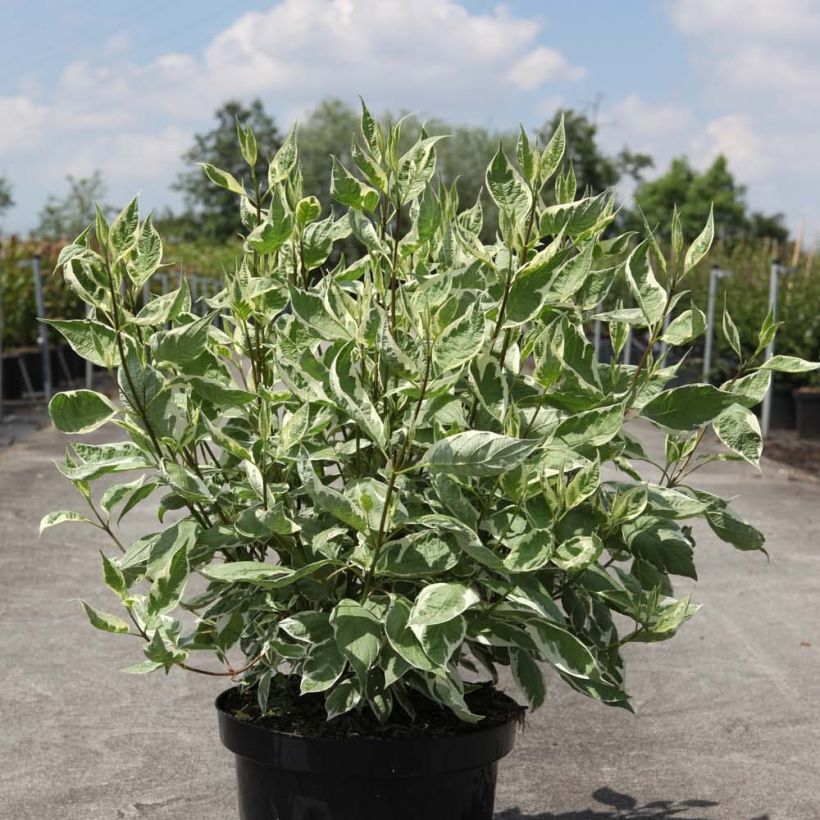

Plant habit
Flowering
Foliage
Botanical data
Cornus
alba
Ivory Halo® 'Bailhalo'
Cornaceae
White Dogwood, Siberian Dogwood
Cultivar or hybrid
Other Cornus
View all →Planting and care
To ensure the healthy growth of Cornus alba, it is best to plant it in a moist, fertile soil that is rich in humus. If the soil is moist, heavy and slightly chalky, it will still thrive. However, it can also tolerate deep soil that is not too compact and not too dry. The ideal planting time is from November to March, in a sunny location to enhance the foliage colours. If a sunny spot is unavailable, plant it in a bright partial shade.
Planting period
Intended location
Care
Planting & care advice
-
, onOrder confirmed
Reply from on Promesse de fleurs
Similar products
Haven't found what you were looking for?
Hardiness is the lowest winter temperature a plant can endure without suffering serious damage or even dying. However, hardiness is affected by location (a sheltered area, such as a patio), protection (winter cover) and soil type (hardiness is improved by well-drained soil).

Photo Sharing Terms & Conditions
In order to encourage gardeners to interact and share their experiences, Promesse de fleurs offers various media enabling content to be uploaded onto its Site - in particular via the ‘Photo sharing’ module.
The User agrees to refrain from:
- Posting any content that is illegal, prejudicial, insulting, racist, inciteful to hatred, revisionist, contrary to public decency, that infringes on privacy or on the privacy rights of third parties, in particular the publicity rights of persons and goods, intellectual property rights, or the right to privacy.
- Submitting content on behalf of a third party;
- Impersonate the identity of a third party and/or publish any personal information about a third party;
In general, the User undertakes to refrain from any unethical behaviour.
All Content (in particular text, comments, files, images, photos, videos, creative works, etc.), which may be subject to property or intellectual property rights, image or other private rights, shall remain the property of the User, subject to the limited rights granted by the terms of the licence granted by Promesse de fleurs as stated below. Users are at liberty to publish or not to publish such Content on the Site, notably via the ‘Photo Sharing’ facility, and accept that this Content shall be made public and freely accessible, notably on the Internet.
Users further acknowledge, undertake to have ,and guarantee that they hold all necessary rights and permissions to publish such material on the Site, in particular with regard to the legislation in force pertaining to any privacy, property, intellectual property, image, or contractual rights, or rights of any other nature. By publishing such Content on the Site, Users acknowledge accepting full liability as publishers of the Content within the meaning of the law, and grant Promesse de fleurs, free of charge, an inclusive, worldwide licence for the said Content for the entire duration of its publication, including all reproduction, representation, up/downloading, displaying, performing, transmission, and storage rights.
Users also grant permission for their name to be linked to the Content and accept that this link may not always be made available.
By engaging in posting material, Users consent to their Content becoming automatically accessible on the Internet, in particular on other sites and/or blogs and/or web pages of the Promesse de fleurs site, including in particular social pages and the Promesse de fleurs catalogue.
Users may secure the removal of entrusted content free of charge by issuing a simple request via our contact form.
The flowering period indicated on our website applies to countries and regions located in USDA zone 8 (France, the United Kingdom, Ireland, the Netherlands, etc.)
It will vary according to where you live:
- In zones 9 to 10 (Italy, Spain, Greece, etc.), flowering will occur about 2 to 4 weeks earlier.
- In zones 6 to 7 (Germany, Poland, Slovenia, and lower mountainous regions), flowering will be delayed by 2 to 3 weeks.
- In zone 5 (Central Europe, Scandinavia), blooming will be delayed by 3 to 5 weeks.
In temperate climates, pruning of spring-flowering shrubs (forsythia, spireas, etc.) should be done just after flowering.
Pruning of summer-flowering shrubs (Indian Lilac, Perovskia, etc.) can be done in winter or spring.
In cold regions as well as with frost-sensitive plants, avoid pruning too early when severe frosts may still occur.
The planting period indicated on our website applies to countries and regions located in USDA zone 8 (France, United Kingdom, Ireland, Netherlands).
It will vary according to where you live:
- In Mediterranean zones (Marseille, Madrid, Milan, etc.), autumn and winter are the best planting periods.
- In continental zones (Strasbourg, Munich, Vienna, etc.), delay planting by 2 to 3 weeks in spring and bring it forward by 2 to 4 weeks in autumn.
- In mountainous regions (the Alps, Pyrenees, Carpathians, etc.), it is best to plant in late spring (May-June) or late summer (August-September).
The harvesting period indicated on our website applies to countries and regions in USDA zone 8 (France, England, Ireland, the Netherlands).
In colder areas (Scandinavia, Poland, Austria...) fruit and vegetable harvests are likely to be delayed by 3-4 weeks.
In warmer areas (Italy, Spain, Greece, etc.), harvesting will probably take place earlier, depending on weather conditions.
The sowing periods indicated on our website apply to countries and regions within USDA Zone 8 (France, UK, Ireland, Netherlands).
In colder areas (Scandinavia, Poland, Austria...), delay any outdoor sowing by 3-4 weeks, or sow under glass.
In warmer climes (Italy, Spain, Greece, etc.), bring outdoor sowing forward by a few weeks.






























